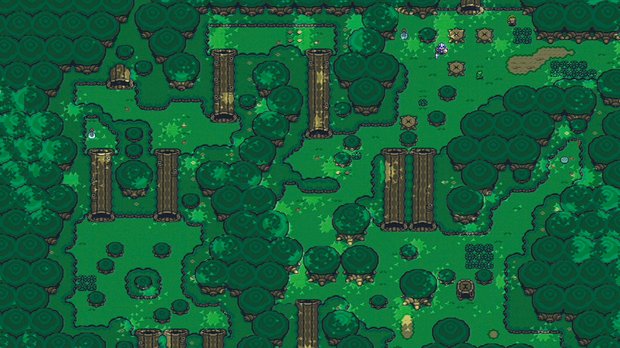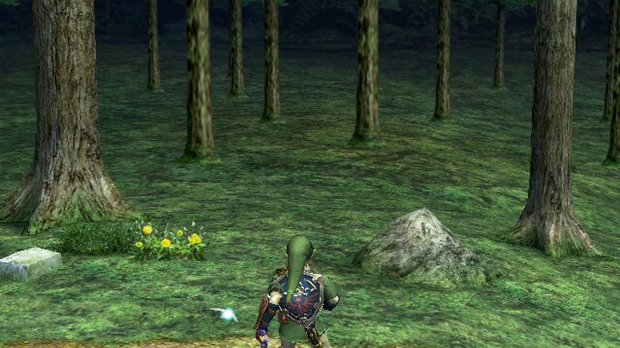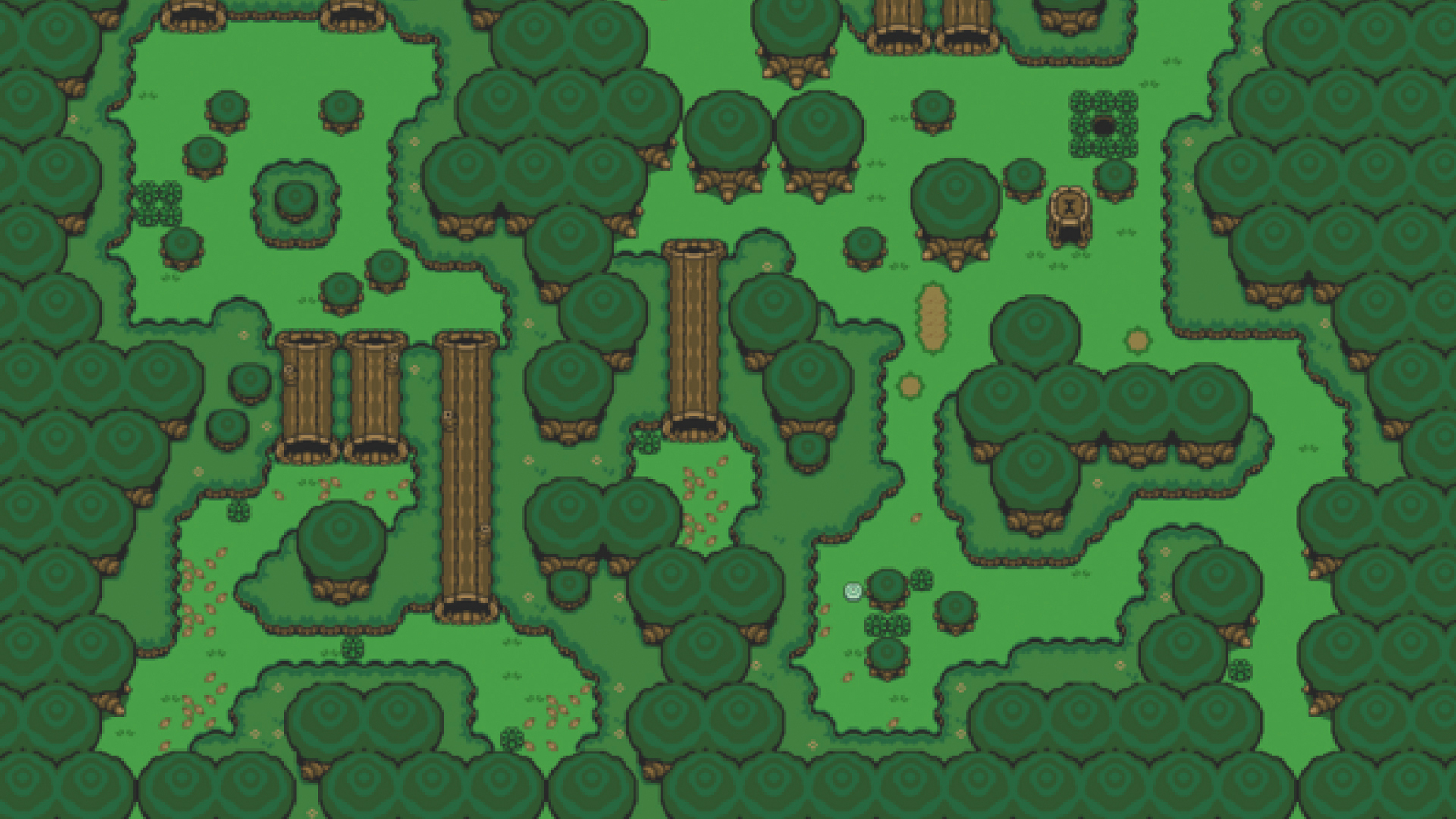The Lost Woods: how Zeldas enchanted groves inspired a forest of puzzling mazes
You could date the underpinnings of the concept back to text-based adventures (“You are in a maze of twisty little passages, all alike”) or to the randomly generated environments of ASCII roguelikes, but the definitive impossible maze appears in the original Legend of Zelda. Link finds himself contemplating two perpendicular paths that intersect amid impenetrable ranks of brown trees. If he has paid an elderly woman for advice, he’ll know that following the paths north, then west, then south, then west again will deliver him out of the forest and into the graveyard beyond. If he has not, there’s no telling how long he might wander, returning again and again to the same eerily familiar screen. This hellish Groundhog Day scenario was especially daunting in 1986, before the solution lay but a few keystrokes away.

The graveyard, where ghosts will harass Link if he bumps into their headstones, is candidly supernatural. But the abutting Lost Woods – as the Forest Of Maze from the shakily translated original Zelda came to be known throughout the series – sit at a threshold between the mundane and the magical, the symbolic and the figurative. Are they a metaphor, a clever way for programmers with limited resources to capture the feeling of being lost in a vast forest without having to render all that vastness? Or are they to be taken literally, implying that the woods are under a space-warping enchantment? Such rich narrative and imaginative roots would inspire several imitations, becoming a staple of fantasy adventure games of the time.
As games grew more spatially and narratively complex, the Lost Woods followed suit. In A Link to the Past, they’re more like a straightforward maze, with green tress shrouded in a disorienting fog. Ocarina of Time’s version returned to something closer to the original puzzle, although this time around they were seeded with hints to aid orienteers. Each screen has some distinguishing feature, and subtle lights inside the tree-trunk tunnels indicate whether a path leads farther into or out of the Woods. The task also started getting papered over by a more robust fiction: anyone who wanders for too long in the Lost Woods turns into a Skull Kid, a Stalfos or, according to Four Swords Adventures, a Deku Scrub. Any ambiguity over whether the Lost Woods were mirror or magic was gradually dispelled, but the goal – to find the true path through confusingly similar terrain – stayed intact.

The idea of game space as an Escherian construct that moves in impossible circuits has also played a role in the Mario series, Zelda’s august foil, since its very first game. Several levels in Super Mario Bros force you to guess the correct path branch or warp pipe in order to proceed. And all of the obvious exits in Super Mario World’s Forest of Illusion are as substantial as its name suggests. Variations on the theme appear in Paper Mario 64’s Forever Forest and Super Mario RPG’s Forest Maze, too. In the latter, you can abandon chasing Geno to follow a series of arcane cardinal directions to find a secret area. Rather than confined spaces, these takes on the Lost Woods are entwined with regular gameplay, and can verge on the point where a fun challenge tilts into a frustrating ordeal.
Not all Lost Woods are created equal. One of the best variants appears in Breath of Fire 3, where corridors through trees are replaced by a wide-open desert, an apt but underexplored place to get lost. A wrong turn on the invisible path triggers the player running out of water and teleporting back to town. But with a clever star-navigation system in place, it feels enchanting and challenging rather than hopeless.

The same cannot always be said for the Final Fantasy series, which includes some of the most galling Lost Woods-inspired mazes ever. Still, its creators brought some new ideas to the concept: get lost in the endless desert near the Gold Saucer and you have to wait for a Chocobo carriage to pick you up and take you back to Corel Prison, while leaving a trail of flags in your wake can help you pass through the perspective-swivelling snowy wasteland of the Great Glacier. On the more frustrating end, the first screen of the Sleeping Forest repeats indefinitely if you have neglected to exhume the Lunar Harp, while the Tomb of the Unknown King achieves the disorienting effect of a Lost Woods via confusing changes in viewpoint rather than level layout.
The Lost Woods concept has been affected by the general easing of difficulty in games since the NES days, when players could be expected to wander for endless hours while waiting for hints by post from the Nintendo fan club. In The Legend of Zelda: The Minish Cap, signs indicate which path leads to the next area, while the Bafflewood in Paper Mario: Sticker Star is made solvable by affixing stickers to signposts at exits, winnowing down false paths by a process of elimination.
Sign up to the GamesRadar+ Newsletter
Weekly digests, tales from the communities you love, and more
And these aids have come alongside a technological transformation that makes all Lost Woods almost pointless. Since there is no manual dexterity involved in getting through them, they rely on our spirit of exploration and perseverance. Now, we simply look up the correct route online – the sense of reward and relief upon finally emerging from a Lost Wood without knowing how you did it is lost to us. Still, the concept retains a vestige of wonderment for anyone who has ever found themselves in a forest so old and vast that it seems enchanted, designed to awe and confound.
Read more from Edge here. Or take advantage of our subscription offers for print and digital editions.
Edge magazine was launched in 1993 with a mission to dig deep into the inner workings of the international videogame industry, quickly building a reputation for next-level analysis, features, interviews and reviews that holds fast nearly 30 years on.



